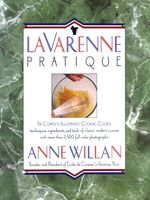Advertisement
Milk
Appears in
By Anne Willan
Published 1989
In the West, most cooks use cow’s milk. Goat’s and sheep’s milks, rich in fat and protein, are sometimes drunk as a beverage, but the bulk is made into cheese. Water buffalo milk, highest of all in fat, is particularly good for cheese-making. Mare’s milk is high in sugar and is popular in eastern Europe for fermented milk drinks.
Cow’s milk contains about 87 percent water, with 3.5 percent protein (mostly caseine) and 5 percent carbohydrates (lactose). The fat content of milk, however, varies with the breed of cow and its feed, from around 3 percent to over 5 percent for Jersey cows. In most countries the sale of raw milk—milk straight from the cow, filtered but otherwise unprocessed—is illegal because it may contain dangerous organisms such as those that cause tuberculosis. To kill these bacteria and the enzymes that produce off flavors, milk is pasteurized before sale by heating it to 144°F/62°C for 30 minutes, or 160°F/72°C for 15 seconds. Much pasteurized milk is then homogenized—processed so that the fat remains evenly dispersed within the milk. Some smaller American dairies and all British dairies also sell unhomogenized milk, offering cooks the option of pouring off the creamy “top”.


